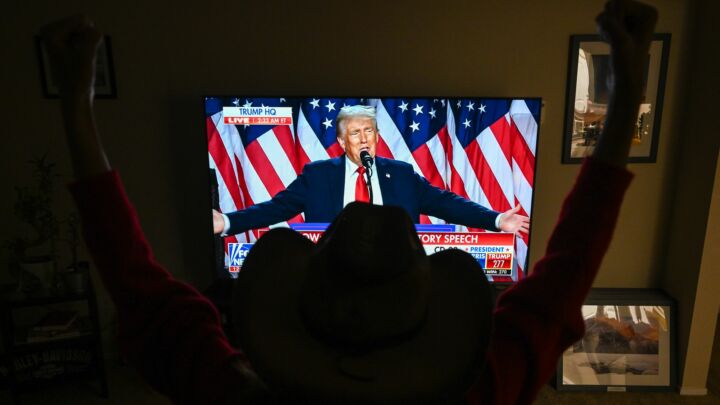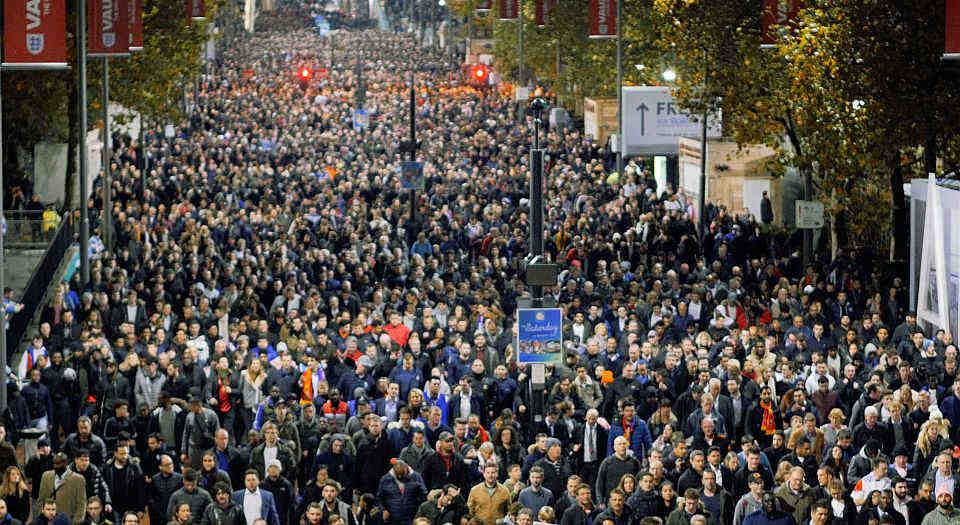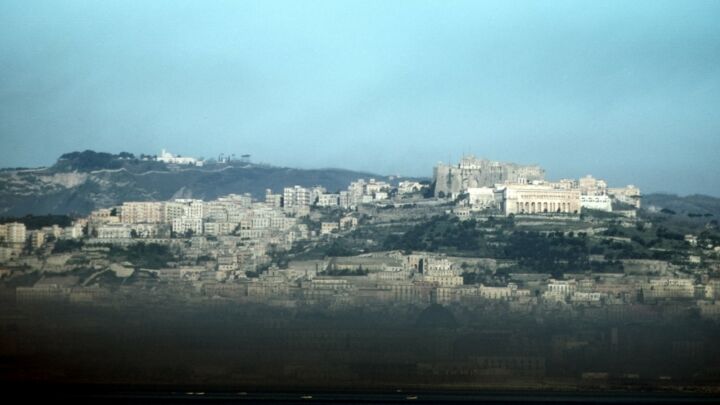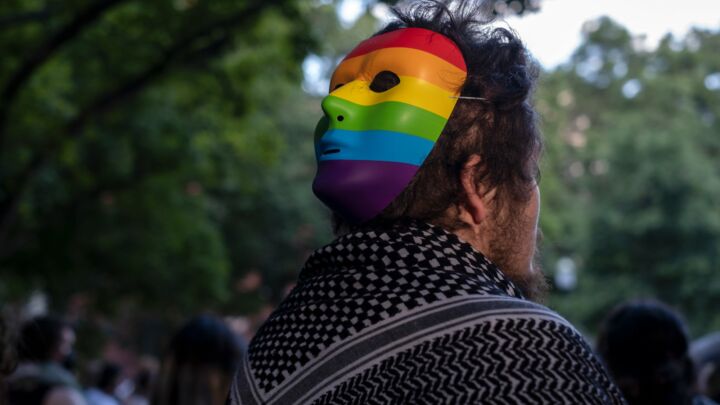
Long-read
When Jews defeated the Blackshirts
In 1930s Manchester, young Jewish radicals organised to force the anti-Semitic menace off the streets.
Want to read spiked ad-free? Become a spiked supporter.
Since the beginning of the Israel-Hamas conflict last October, anti-Semitism in the UK has reached highs not seen since the 1930s.
A report from the Community Security Trust (CST), published in February, revealed that there were over 4,100 anti-Semitic incidents in the UK in 2023. This is the highest number the CST has ever recorded in a single calendar year in its three-decades-long history. British Jews have been physically and verbally harassed on the streets. Kosher restaurants have been attacked. At points, Jewish schools have been forced to close their doors because their pupils have been at risk. What’s more, the rise in anti-Semitic incidents began within hours of Hamas’s pogrom in southern Israel. That is, before Israel had even mooted an invasion of Gaza.
The echoes of the 1930s and the rise of Oswald Mosley’s fascist movement are difficult to ignore. Then as now, Britain’s Jews were being menaced on the streets by a growing mass movement charged with anti-Semitic sentiment. And then as now, Britain’s Jews had to start fighting back.
It’s worth looking at one key moment in this conflict between Mosley’s fascists and Britain’s Jews. Not the well-known Battle of Cable Street in October 1936, when locals stopped a British Union of Fascists march through Stepney, east London. But another battle, this time in the Jewish quarter of Manchester. For this provides a remarkable story of resistance and bravery in the face anti-Semitism – and a reminder of what it takes to stand up against the oldest hatred.
The fascists come to Manchester
Oswald Mosley was elected as a Labour MP in 1926 and became a cabinet minister in 1929. But in 1930, he left the party after it rejected his ‘Mosley Memorandum’ – a political plan for an Italian fascist-style corporate state, in which power would be vested in the hands of five or six ministers and parliament relegated to a sideshow. In 1932, after a tour of Mussolini’s Italy and a trip to Germany to fraternise with the Nazis, Mosley formed the British Union of Fascists (BUF). In its first 18 months, its membership grew rapidly to around 50,000 members. From these, Mosley formed his equivalent of Mussolini’s black-shirted Action Squads – the similarly black-shirted Fascist Defence Force. Numbering several hundred, Mosley’s Blackshirts were paid one pound a week to serve as his own fascist paramilitary.
The BUF may have been a nationwide party, but Mosley was always particularly keen to establish its presence in Manchester. The Mosley family had a civic connection to the city, having been the feudal lords of the manor of Manchester from the later 16th century until the 18th century. Indeed, Mosley Street still runs through the city centre.
Mosley’s efforts appeared to be paying off. In the early 1930s, the BUF expanded rapidly in Greater Manchester. By 1934, it had 18 branches in the city and nearby satellite towns, such as Rochdale. After London, Manchester had the largest fascist presence of any area in the UK.
But as a result, Manchester also had a greater anti-fascist presence than any area outside of London. This was due, in the main, to the resolve of Communists, particularly the Young Communist League activists from Manchester’s Jewish quarter, Cheetham.
The BUF seemed intent on antagonising and threatening Cheetham’s Jewish residents from the moment it sought to establish itself in the city. It even set up its Manchester headquarters in two large houses on Northumberland Street, just a few hundred metres north of Cheetham. Hilda Cohen, who grew up in a Jewish family on Northumberland Street, recalled witnessing its opening in her 1989 book, Bagels with Babushka. She watched BUF supporters ‘as they strode up the drive and mounted a guard on either side of the steps while [Mosley] performed the opening ceremony. There was an air of disquietude.’
As well there might have been. Cheetham was a densely populated, working-class, mainly Jewish area near Manchester city centre. People worked in the local sweated trades as pressers, cabinet makers, garment makers, or as market traders. Many of its residents were the sons and daughters of immigrants from the Russian Empire. Some had fled pogroms, and many had been members of the Jewish Socialist Bund, an abbreviation for the General Jewish Workers Union in Lithuania, Poland and Russia.
The children of these Jewish immigrants grew up experiencing the casual anti-Semitism of the 1920s and 1930s in Manchester. They were used to fighting their corner, and doing so with little support from Labour, Liberals and the Tories, or indeed the authorities.
Cheetham was also a hub of radicalism long before the Blackshirts arrived. In little more than a square mile, it hosted numerous political and educational organisations. There were offices for the Cheetham Branch of the Independent Labour Party, the Jewish Socialist Democratic Association, the Arbeiter Freund Group, the Manchester Progressive Group, a Pankhurst Hall, the Socialist Sunday School, the British Socialist Party. Above all, there was the Cheetham branch of the Communist Party’s Young Communist League. As Maurice Levine, a Communist Party member at the time, recalled, ‘the majority of the members [of the YCL] were Jewish’ (1).
This then was where the BUF had set up shop – near a Jewish area rich in self-organised political activism and social solidarity.
The anti-fascist fightback
Hitler’s appointment as German chancellor in January 1933 emboldened the BUF. During the course of 1933 and 1934, shops in Cheetham were regularly daubed with the slogan, ‘Perish the Jews’. A synagogue had swastikas chalked on its walls. But resistance was never far away.
In February 1933, Mosley decided to hold his first major Manchester rally at the 7,000-capacity Belle Vue stadium. Members of the YCL duly turned up ready to spoil Mosley’s evening. Writing 60 years later, Benny Rothman, recalled what he, then a young Jewish communist from Cheetham, saw that night:
‘There came a rolling of drums and a blare of trumpets, and preceded by a small army of strong-arm stewards… Mosley bounded into the hall and on to the platform to a spot mounted with microphones and, of course, decorated with a huge Union Jack. Sections of his supporters stood up and became hysterical in their clapping and cheering as Mosley, resplendent in his tailor-made black uniform, melodramatically raised his arm to call for silence. Gradually silence was restored, and Mosley started to speak in a dramatic voice and manner.’
Rothman was never going to be intimidated by this fascist spectacle, however. He asked his comrades to keep the stewards off him for as long as possible, stood up on his seat and scattered anti-fascist leaflets in a semi-circle in front of him. ‘Blackshirt stewards in the region were literally fighting to get their hands on me, and their feet too’, he recalled. ‘I was knocked to the ground, where I curled up in a tight ball, protecting myself from the blows and kicks. Two or three stewards picked me up off the ground, dragged me to the top of the stairs of the balcony and then pitched me over.’
Rothman was fortunate – his fall was broken by a steward below him. Nevertheless, fighting the fascists was always dangerous, not least because they were often equipped with knuckle-dusters and coshes. Maurice Levine was also at the Belle Vue that February evening. He recalled how his comrade, Wilf Winnock, took a beating for heckling Mosley: ‘They’d haul you out of your seat, then in the corridor, you ran the gauntlet. [Wilf] was badly injured and he was a boxer.’ (2)

Mosley continued holding rallies and mass meetings across the city during 1933 and 1934. He eagerly incited violence against Jews in general and Cheetham’s anti-fascists in particular. During his speech at Belle Vue, Mosley declared, ‘Look at the mobilisation of Jews from Cheetham Hill Road. Behind those foreign Yiddish faces is foreign Yiddish gold.’
This was a frequent refrain of the BUF and Mosley. They loved to play upon the idea of the Jews as the moneyed power behind the throne, supposedly using and betraying Britain for their own ends. That evening at Belle Vue, Mosley accused Britain’s Jews of trying to ‘lead us to war with Germany in a Jewish quarrel’.
The verbal attacks on Cheetham’s Jews were matched by the Blackshirts’ physical assaults. They frequently entered the square mile of Cheetham to hold street meetings, and harass and attack locals. Levine recalled ‘tangling’ with the Blackshirts as they walked through Strangeways, another predominantly Jewish area:
‘[The Blackshirts often] had boxers with them. [Tommy] Moran, he was heavily scarred. I got near him, he took a swipe at me, I took a swipe at him. They were provocative. They did it almost every night.’
From 1933 onwards, Cheetham began to mobilise. Rothman, Levine and other members of the Young Communist League formed the Challenge Club. It was part-social club, part-political base for anti-fascists. The premises were next to a garage and still stand today. The club organised days out rambling, dances on a Sunday, and, above all, it organised politically. These militant young Jewish Communists ran classes on political economy and historical materialism, as well as speakers’ classes preparing people for street meetings across the city. They even ran a boxing club that taught people how to fight.
The Challenge Club mounted considerable resistance to the BUF. Its members planned where and when to stop the Blackshirts coming into Cheetham. Issy Luft was a key individual in the Challenge Club’s activities. As Luft’s son, Mike, later recalled, the Challenge Club was more than willing to physically face down the fascists:
‘People like Benny [Rothman] and my dad were leading anti-fascists. It wasn’t just the political campaigning. It was on the streets. These were people who wouldn’t back off.’
Mike Luft remembered the time in 1934 that the BUF tried to hold one of their regular meetings in Marshall Croft in Hightown, another predominantly Jewish area of Manchester. The Challenge Club turned up and gave the fascists a beating. ‘The fascists were dealt with so harshly’, recalled Luft, ‘that [from that point onwards] the police would not offer them police protection for marches into Jewish areas. It got completely out of control as far as the police were concerned.’
Indeed, in 1934, Manchester’s chief constable sent a report to the Home Office complaining about the growing disorder in the city. He said that the Blackshirts were trying to provoke Jews. He reported that since Mosley’s Belle Vue rally in 1933, there had routinely been four or five incidents of public disorder every week, mainly in the Cheetham area.
But this wasn’t just evidence of the BUF’s anti-Semitic provocations. It was also testament to the fortitude and resistance of the young Communists and their supporters in the broader Jewish community. They had a single, consistent strategy – to defend the community and drive the fascists off the streets.
Perhaps Mosley believed that Manchester’s Jews would be easily intimidated. Perhaps he thought that Cheetham’s inhabitants would be too passive to resist. If so, he and the fascists were proved wrong time and again.
This proud, working-class area, a refuge for so many Jews from across Europe, drew on its social and political resources to stage a fierce, brave resistance. With the young radicals of the Challenge Club to the fore, Cheetham’s Jewish community fought back. At every point, the BUF ran up against quickly mobilised opposition. On 28 June 1936, Mosley tried to rally support at Hulme town hall, only to be met by ‘a crowd of some thousands’, as the Manchester Guardian reported it at the time. A few weeks later, Mosley tried to gee up a crowd of fascists at Albert Croft in Miles Platting, only to be met by a 5,000-strong crowd who were, as one report put it, ‘overwhelmingly hostile to the fascists’.

Over the course of just a few years, Cheetham’s anti-fascist street fighters barracked BUF meetings, and they sought out and fought Blackshirts on the street. By the end of 1936, the Blackshirts were all but defeated in Manchester.
In 1937, Mosley sold the BUF headquarters on Northumberland Street to furniture importer Abraham Jacob Pfeffer. He in turn rented it to the ultra-orthodox Jewish organisation, Machzikei Hadass, which bought it two years later for a nominal sum and turned it into a Synagogue. It is difficult to imagine a more fitting way to mark the crushing of such an anti-Semitic movement.
A legacy to draw on
In the shape of the anti-Israel movement, Britain’s Jews today face a different threat. But it’s one that bears comparison with the Blackshirted menace that once stalked Britain’s streets. Once again, Jewish people find themselves confronted with a movement shot through with anti-Semitism. A movement that wants to drive Jewish people out of public spaces, just as it wants to drive Israel off the map. A movement that wants to efface all expressions of Jewishness.
In 1930s Manchester, Cheetham’s Jewish community, led by young Communist radicals, fought back. They did so courageously and determinedly. But they also did so alone, without the support of the mainstream left. There is a danger that Britain’s Jews now find themselves in a similar position, left alone to face the oldest hatred in its new Islamist and identitarian guise.
They need the solidarity of those outside the Jewish community more than ever. To defend synagogues, Jewish schools and businesses. To defend Jewish people from the Israelophobia that now seems to grip a significant minority of the population, much as fascism once did.
The legacy of Cheetham’s struggle against the Blackshirts is one of courage, conviction and resistance. Young radicals fought back against the most reactionary ideology of the era. It’s time we started doing the same.
Michael Crowley is an author and dramatist. Visit his website here.
(1) From Cheetham to Cordova: A Manchester Man of the Thirties, by Maurice Levine, Neil Richardson, 1984.
(2) Ibid.
Pictures by: Getty.
Celebrate 25 years of spiked!
A media ecosystem dominated by a handful of billionaire owners, bad actors spreading disinformation online and the rich and powerful trying to stop us publishing stories. But we have you on our side. help to fund our journalism and those who choose All-access digital enjoy exclusive extras:
- Unlimited articles in our app and ad-free reading on all devices
- Exclusive newsletter and far fewer asks for support
- Full access to the Guardian Feast app
If you can, please support us on a monthly basis and make a big impact in support of open, independent journalism. Thank you.







Comments
Want to join the conversation?
Only spiked supporters and patrons, who donate regularly to us, can comment on our articles.